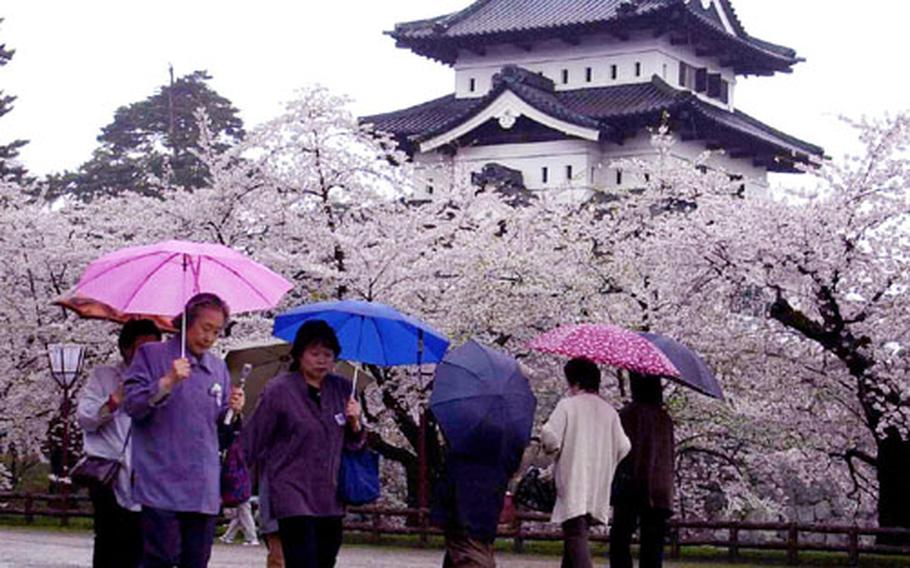
Umbrellas were the weapon of choice for visitors to Hirosaki Castle, Japan, where 5,000 cherry trees reached full bloom under gray skies Saturday. (Wayne Specht / Stars and Stripes)
HIROSAKI, Japan — Umbrellas were perfect accessories for camera-wielding shutterbugs in this northern Honshu city where more than 5,000 cherry blossom trees reached their peak blush Saturday.
Despite chilly temperatures and persistent rainfall, thousands of visitors viewed the blossoms, called sakura, growing on the grounds of Hirosaki Castle in the heart of the city.
The original Hirosaki castle was constructed in 1611, and rebuilt in 1810 after it was destroyed by fire. Hirosaki’s cherry blossom festival lasts until May 4.
“They’re very pretty and remind me of how crab-apple trees looked each spring back in Wisconsin,” Trisha Rieth of Misawa Air Base, Japan, said. It was her first time visiting the castle.
While Rieth and her family drove to the festival, a chartered passenger train brought several hundred Misawa troops and their families from the base 65 miles east of the city.
Though the slate gray skies muted the brilliance of the blossoms, it didn’t bother Petty Officer 1st Class Pete Carolan, a Navy SEAL pulling reservist duty at Misawa’s Naval Air Facility.
“The misty atmosphere makes for great photos,” said Carolan, who paints patriotic murals at military bases.
Each spring, the cherry blossom-blooming front migrates from southernmost Okinawa to Hokkaido in the north, signaling the seasonal rite of spring.
Japan has more than 400 varieties of cherry trees, according to the Japan National Tourism Organization.
Blossoms are tinted almost white to the deepest of pinks. Single-petal blossoms bloom for a few days, while the more robust double-petal blossoms last as long as a week.
The Japanese cherry tree does not yield fruit, leading some observers to reason that since it does not have to produce a market crop, it is a born aristocrat — its single purpose to be beautiful and nothing more.